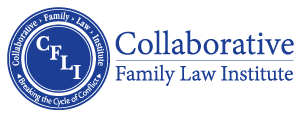Inspiring Adult Interactions: Modeling Behavior Through the Collaborative Process
Collaborative Teams and the Collaborative Process influence spousal behavior and team dynamics through their interactions with each other.
by: Susan M. Keyes, Esq.
Divorce Without War,® smkeyes@bellsouth.net
Years ago, I was visiting my sister in NJ, riding as a passenger in her car with my three-year-old niece sitting in her car seat next to me. My brother- in- law slammed on the brakes, forced to stop suddenly when the car in front of us stopped. As our car lunged forward, my niece shouted, “YOU MORON,” and we all looked at her with shock. What caused her to say this? How many times had she heard a parent yell “YOU MORON” while driving? We know that children may not be very good at listening to their elders, but in these moments, we realize they are listening, and they never fail to imitate us.
When a person observes the behavior of another and then imitates that behavior, he or she is modeling the behavior. Modeling also applies to adult interactions. Collaborative Team members model behavior for others in the Collaborative Process, including the clients and other team members. We risk serving as models for inappropriate and undesirable behavior, such as swearing, losing our temper, interrupting, and speaking disrespectfully. Appropriate behavior can be modeled by speaking calmly and respectfully, setting the tone for all of the participants at a Team meeting. Listening and not interrupting, even when what is being said, is displeasing or seemingly incorrect, requires restraint, but leads to respectful dialogue. Participants in the Collaborative Process will be more inspired to behave in this way if they view the professionals maintaining this decorum. Outside of Team meetings, do you promote blame, propose that the other attorney is difficult or that the other spouse is unreasonable. Venting, in this way, is modeling negative behavior. Alternatively, sharing information without disparagement or judgment leads to better understanding and improved outcomes.
In the Collaborative Process, the Team will demonstrate how to speak, listen, and perhaps even understand another perspective- thus creating an atmosphere of respectful communication. Against this backdrop, the parties will reach more holistic resolutions, with improved communication patterns in the relationship after the divorce. As Collaborative professionals, we must model the behavior we wish our clients to display. Lead by example.
